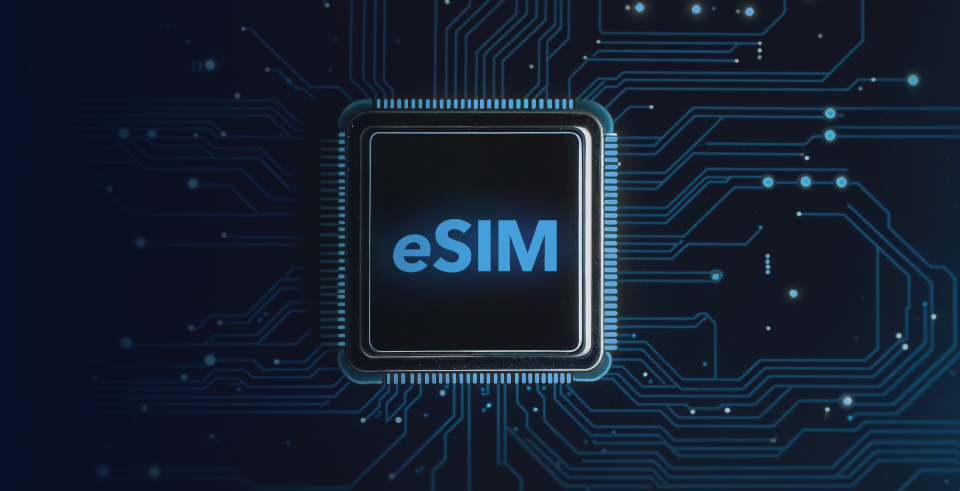Seamless IoT connectivity with Transatel Global IoT eSIM
Connect, manage, and seamlessly scale your IoT fleets with Transatel’s Global IoT eSIM. Leveraging the latest GSMA SGP.31/32 standards, our multi-network IoT eSIM offers future-proof, globally scalable connectivity across 200+ countries and territories on 2G, 3G, 4G/LTE, 5G, and LTE-M networks.
Test our IoT eSIM
Global eSIM connectivity partner for




Introducing Transatel Global IoT eSIM
As the first operator to introduce eSIM connectivity in France, and a global pioneer in eSIM technology, Transatel provides secure, multi-network cellular connectivity for every industry and use case. Today, our Global IoT eSIM connects IoT fleets across more than 330 public networks worldwide.
IoT SIM Champion
Awarded as the utmost connected IoT SIM worldwide
eSIM Pioneer
Early adopter of eSIM technology and global connectivity pioneer
Global Operator
eSIM connectivity provider in 200+ countries & territories
Infrastructure Owner
Fully owned infrastructure with regional points of presence across different continents
Evolution of GSMA Remote SIM Provisioning (RSP) standards
Hover for details
What is the eSIM SGP.31/32 standard?
• The eSIM SGP.31 and SGP.32 standards are the latest GSMA specifications (2023), designed specifically for IoT devices.
• Unlike the earlier SGP.21/22 consumer standards, which were created for smartphones and required user actions such as scanning a QR code or using an app to activate an eSIM, the new standards enable automatic, network-driven provisioning.
• This makes it possible to remotely install, update, or switch profiles on IoT devices that often lack screens, cameras, or user interfaces. SGP.31 defines the technical architecture, while SGP.32 sets out the operational procedures.
• Together, they simplify large-scale deployments, reduce complexity, and support the long lifecycle of IoT devices.
Transatel’s eSIM readiness program
With over 25 years of expertise in delivering global connectivity solutions, Transatel provides strategic guidance and pilot support for your IoT deployments. A three-part consulting and enablement program to help you take control of your IoT fleet.
• Goal: clarify key issues, demystify SGP.32 and explain its architecture (SM-DP+, IPA, eIM, and orchestrator).
• Format: 1–2 days interactive workshop + diagnostic of current situation (use cases, architecture impacts, SIM supplier contracts, MNO lock-ins).
• Goal: support client in discussions with suppliers, avoid traps and biased sales talk.
• Scope: join calls with MNOs, SIM vendors, orchestrators; critical review of offers; objective feedback based on experience.
• Goal: provide our own SGP.32 environment for real use cases with our multi-operator profile (901) and tools.
• Includes: access to full stack (eIM + orchestrator), help with first integration, option to buy profile + global connectivity + SGP.32 as a service.
Contact us
Prospect - Home IoT - EN
"*" indicates required fields
FAQs
What is an eSIM? 
An eSIM (embedded SIM) is a reprogrammable SIM that uses Remote SIM Provisioning (RSP) standards to download and switch profiles over the air, without the need to replace the card. You can activate mobile plans remotely, making it faster, more flexible, and ideal for global connectivity.
How does an eSIM work? 
An eSIM stores your mobile subscription details securely within a chip inside your device, called an eUICC (embedded Universal Integrated Circuit Card). When you switch carriers or plans, your device can download a new profile over the air – no need to swap cards manually.
What is the difference between an eSIM and a traditional SIM card? 
A traditional SIM is a removable plastic card that must be physically swapped to change operators. An eSIM, whether embedded in the device (soldered MFF2 form factor) or provided as a plastic triple-cut card, can be digitally programmed and updated remotely.
What are the different SIM card sizes? 
Physical plastic SIM cards come in three main sizes: Standard SIM, Micro SIM, and Nano SIM (triple-cut). Today, Nano SIMs are the most common. Soldered SIMs (MFF2) eliminates these size differences altogether, since the SIM is built into the device.
eSIM vs SIM: which is better? 
Both options provide mobile connectivity, but eSIM offers greater flexibility. With eSIM, you can switch carriers without needing a new card, manage multiple profiles on one device, and enjoy a more seamless travel experience. However, traditional SIM cards remain useful for older devices that do not support eSIM.
What is eUICC? 
eUICC (embedded Universal Integrated Circuit Card) is the technology behind eSIM. It allows secure storage and management of multiple operator profiles, enabling remote provisioning and compliance with GSMA standards. This makes eSIM both future-proof and globally interoperable.


